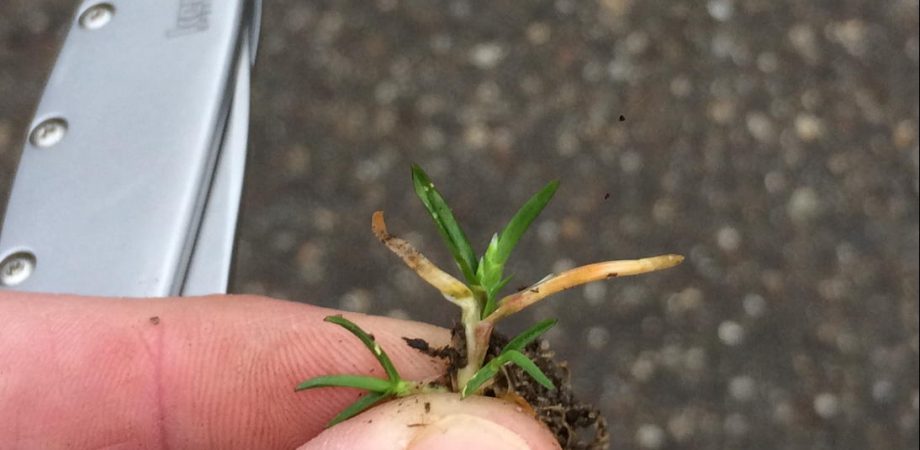When Poa Annua Rears Its Ugly Seedhead

Whether you’re trying to manage or reduce the population of Poa annua, it is, and will likely always be, a challenge to superintendents everywhere. Poa annua generally germinates once the soil temperature is less than 70 degrees Fahrenheit. In areas of high elevation, shade coverage, or wet conditions, germination tends to occur earlier in the fall. Sometimes the germination is a welcomed sight to those who might have lost turf in areas and are happy to see the turf stand fill in.
But if you’re not in that camp, then you’re likely not happy to see it in any place or at any time. If you want to address seed germination in your rough areas, it is important to apply pre-emergent herbicides before germination. Pre-emergent herbicides can prevent seeds from germinating in the fall, and then a second application in the early spring is recommended to prevent spring germination. Because Poa annua is so resilient, it may take several years of pre-emergent applications to slow down an invasion. Product options include Pendulum (pendimethalin) and Kade 4L (prodiamine).
Another approach to Poa annua control is seedhead suppression. A single plant can produce hundreds of seeds in its short life, making it critical to curb the growth of the seedheads. A plant growth regulator, like Proxy (ethephon), is the product for this job.
The critical fall application will be most successful if you follow these do’s and don’t’s:
- Do use Proxy to prime the plant before winter.
- Do make the application at or immediately after the final mowing of the season in the fall.
- Do apply Proxy in combination with a snow mold application.
- Don’t add fertilizer to the fall application.
- Don’t make the application within ten days of aerification, because that could limit recovery and fill-in.
- Don’t aerify your greens too late in the fall, as this leaves very little time for the holes to heal. If the holes don’t heal, the Poa annua seeds will now have countless seedbeds to help them establish, only worsening your problem.
- Don’t make the application when frost could be a threat because that could lead to discoloration.
Work hard to promote your more favorable turf varieties. Give the Poa annua everything it hates. Dry conditions, full sun, and targeted growth regulators will all be a great help in reducing your Poa annua population. If you implement a well-rounded plan of attack, you will soon see a trend in the right direction.
With these guidelines and the right products, you’ll be well equipped to attack Poa annua bluegrass this fall. As always, contact your local sales representative with any questions you may have about Poa annua control.
Matt Welch
Sales Representative







